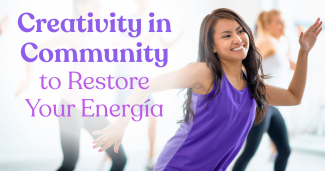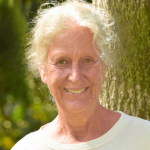Creativity in Community to Restore Your Energía
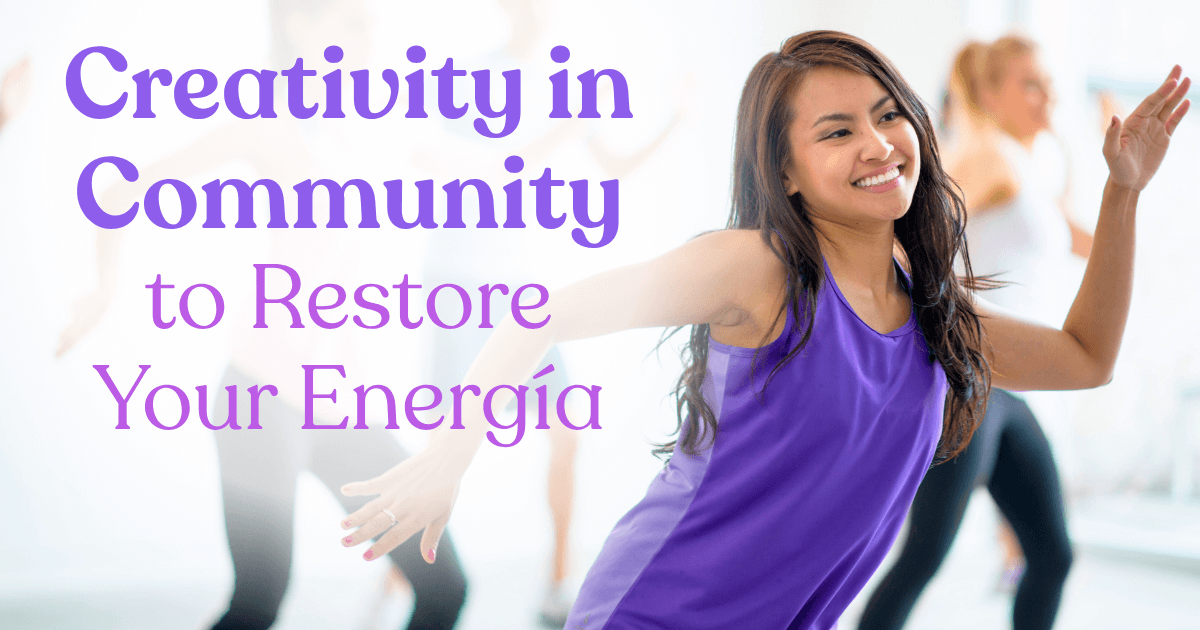
[Editor’s Note: The monthly blog post from Dr. Weingarten is here! Kaethe Weingarten, PhD, founder and advisor of MCN’s Witness to Witness, shares stories, resources, and helpful tips to support health care workers and others through the many stressors of their daily lives.]
Today, my friend said to me, “I think our dance practice is working for me like a vaccine.” My friend and I meet weekly over Zoom. We've been dancing together for over a decade, in a variety of settings—indoors at dance studios and outdoors in parks and even at a local cemetery. Though we no longer live near each other, we’ve kept our practice going virtually. Time and again, we find that transitioning from solo movement to shared expression consistently lifts our spirits, no matter how we felt at the start of the call. If a vaccine is meant to be protective against a disease, and responding to the current situation with despair is a kind of illness experience, then dancing together is our vaccine.
One thing that our practice does is that it activates and restores energy. I have been reading about energy with my dance buddy and one idea that struck me as an English language speaker is how much linguistic variety there is to express different experiences of energy. In Spanish, la energía can be understood by some Spanish speakers to mean power, drive, or spirit, while el vigor may be understood more as vigor, lustiness, or zip. El ñeque may be used in some cultures to mean strength and vitality while la fuerza in some contexts means force. We need some combination of all of these kinds of energies, as well as awareness of when we need to conserve our energy, to be as resilient as possible to meet our times.
Although I spend way too much time sitting at my computer, I also use movement to reset my mind and body. I go for long walks and until recently I tried to walk briskly. However, to cope with the world we are living through now, I have also started to take photos during my walks, with a focus on composition. I am asking myself, “How do I frame what I am seeing?” which is one of the primary questions I am also asking myself as I read the news or commentaries on it. In thinking about composition, I realize I am making a choice for the viewer of what their eyes will be drawn to. That is, the framing allows me some control over what they do and do not see, what is in the frame and what is outside of it. As a metaphor, I find this helpful. I can remember when I am learning about something that is upsetting that there might be something positive that is outside the particular frame that has been set for me by the writer or speaker. I can also decide to investigate what is outside of the frame. I can be curious.
Many scientists and spiritual practitioners endorse calming methods when one is fearful or anxious. And like many people now, I am fearful and anxious more than I would like. I definitely follow the advice of the experts who have studied the virtues of calming methods, like slow, diaphragmatic breathing, mindfulness, yoga, meditation, and immersion in nature. But I have also found another method that is equally effective and more satisfying. If I go out for a walk and decide to take photos, I am walking with a particular mindset. I am walking to see what captures my imagination. I am walking to see what I am curious about. If I see something that attracts me, and by slowing down as I invariably do, I engage my creative energies. Deeply engaged with framing my “shot,” I am totally unaware of my fear and anxiety. The one seems to cancel out the other.
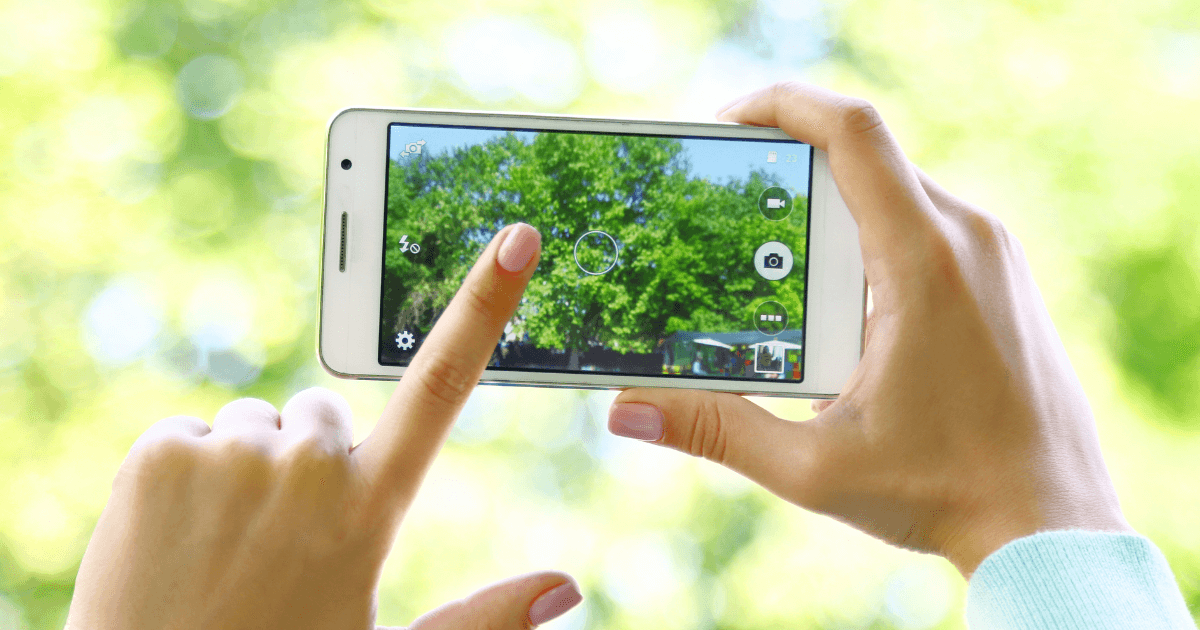
Taking a photo I like makes me happy. But what makes me happier is when I share it, when I create connection around the photo, even if that community is transitory. I think it is true for many of us that we tend to think our experience – be it fear or grief or worry -- is ours alone. And of course, each of us does have our own troubles. But we also have embodied responses to events occurring in the social and political sphere that are more shared than we think, less individual or idiosyncratic. My dance teacher starts our movement class with us in a circle, doing a movement check-in to a prompt. A few weeks ago, her prompt was, “How is your sleep these days?” There were 13 of us at class and 11 of us dramatized terrible sleep. There was thrashing, insomnia, hyper-alertness, no dreaming, restlessness -- all manner of movements suggesting our sleep was disrupted. Though we learned we were each having sleep disturbances, we also felt better about it. The experience moved a profoundly individual experience into the collective sphere. What we thought was unique to each of us, turned out to be a shared, collective experience. It socialized sleep. We laughed, the kind of laughter that releases tension. We all felt better!
In this small example, at least two things are happening besides movement or physical exercise. We are engaging our creativity in community. And nurturing community is itself a creative act, one that is happening less and less it seems. I have written before about the previous Surgeon General, Vivek Murthy, MD, declaring in May of 2023 an epidemic of loneliness. The World Health Organization followed suit in November of 2023, establishing a global Commission on Social Connection, flipping the title of their commission from the negative – loneliness as an outcome of a lack of social connections – to the positive – what people need now.
Recent data suggest that the loneliness epidemic started well before 2020 lockdowns. Instead, it is a trend that has been building for at least two decades:
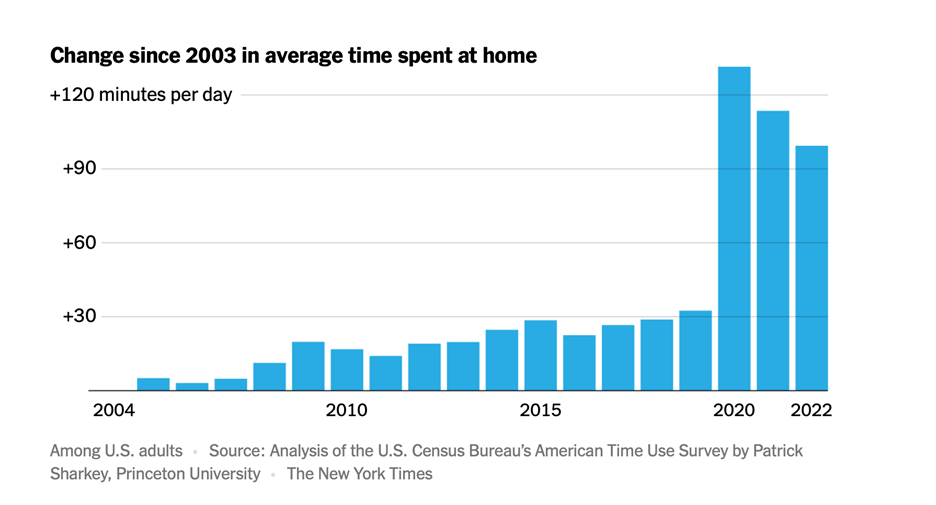
Patrick Sharkey, the author of the Time Use Study on which the graphic is based, wrote in the article from which the graphic is taken that: “Time at home has risen for every subset of the population and for virtually all activities. Preliminary analysis indicates that time at home is associated with lower levels of happiness and less meaning.”
There are many avenues into the interpretation that more time at home is “associated with lower levels of happiness and less meaning.” One important one is that it likely means we are not having conversations in which we are curious and vulnerable, trying to get to know someone and have them get to know us, even if for a short while. Sonia Lyubomirsky, a renowned happiness researcher, says just this: If she has one happiness tip, it is to have a 15-minute conversation with someone where you share vulnerably, listen deeply, and respond with curiosity about what you are saying and hearing. She says that 95% of why happiness interventions work – when they do – is because they help people feel more connected to each other. In the happiness research literature social connection not only helps us be happy and flourish but provides a container for our fear and anxiety. Sharing distress with others who are empathic to us softens that distress.
Even elephants understand this! Apparently, during a recent 5.2 magnitude earthquake in Southern California, elephants at the San Diego Zoo felt it through their feet early on and did a behavior that is known to be one they use to protect each other and the more vulnerable ones among their herd. They form a tight circle. The behavior is known as bunching. Most of us are experiencing some form of an earthquake under our feet, metaphorically, and the elephants’ solution is a wise one, according to decades of scientific research. Happiness, flourishing, and courage all depend on connection with others. We can bunch!
- Log in to post comments
